IoT devices (Internet of Things) are reshaping how humans interact with the physical world. This article will help you understand what IoT Devices are, their practical applications, and the development trends of IoT devices in 2025 – along with the outstanding role of BAP Software in the IoT ecosystem in Vietnam.
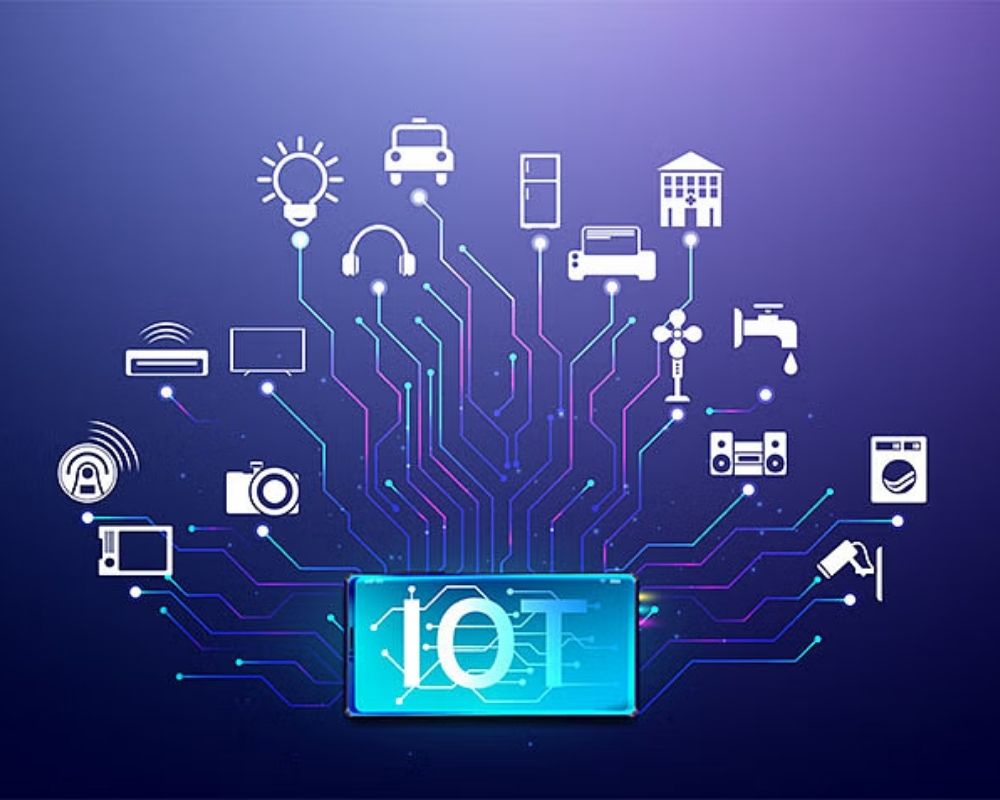
Applications and trends of IoT devices in 2025. Source: Simpli Learn
What are IoT Devices?
IoT Devices are physical devices capable of connecting to the internet and transmitting data back and forth with other devices, cloud platforms, or central processing systems. They act as “digital senses” that enable technology systems to perceive, monitor, and interact with the real environment.
Definition of Internet of Things (IoT)
IoT is a network of devices embedded with sensors, software, connectivity, and other technologies that enable data exchange without human intervention. When integrated into larger systems, IoT can create intelligent models in manufacturing, urban management, healthcare, agriculture, and various other sectors.
Basic Components of an IoT Device
An IoT device typically consists of four main components:
Sensor: Collects data such as temperature, motion, light, location, etc.
Connectivity: Wi-Fi, Bluetooth, Zigbee, 4G/5G, or LoRa for data transmission.
Processor: Processes data locally or sends it to the cloud.
Control software (Firmware/OS): Interface or software running the device.
How Do IoT Devices Work?
For example, a temperature sensor in a factory will:
Detect the ambient temperature.
Send data to the system via wireless connection.
Analyze the data to trigger alerts (if temperature exceeds the threshold).
Notify supervisors or automatically adjust related machinery.
Thanks to the ability to connect – sense – analyze – respond, IoT devices are the foundation for intelligent systems that can operate autonomously, save energy, and improve efficiency.

General information about IoT. Source: EE Times Asia
Common Types of IoT Devices Today
IoT is becoming deeply integrated into daily life and business operations. Below are commonly used IoT device categories:
IoT Devices in Smart Homes
Motion, window, temperature sensors: used in security systems and climate control.
Smart cameras, AI doorbells: support remote surveillance, detect strangers.
Smart bulbs, air conditioners, plugs: app-controlled, energy-saving.
IoT Devices in Business and Industry (Industrial IoT – IIoT)
Vibration, humidity, pressure, temperature sensors: monitor machine conditions in factories.
GPS, RFID tracking devices: manage transport vehicles, containers, goods.
Industrial IoT gateways: collect and synchronize data from multiple devices, connect to ERP/SCADA systems.
IoT Devices in Healthcare (IoMT)
Wristbands measuring heart rate, oxygen, blood pressure: real-time health monitoring.
Remote patient monitoring devices: help doctors supervise patients at home.
Smart ventilators: provide early alerts for respiratory abnormalities.
IoT Devices in Transportation, Agriculture, Energy
IoT in traffic: signal sensors, vehicle density monitoring, automatic toll collection.
IoT in agriculture: soil, water, temperature sensors – adjust irrigation systems.
IoT in energy: smart meters, energy consumption monitoring systems.
The diversity and flexibility of IoT devices allow them to be applied across all industries, contributing to a comprehensive and efficient digital ecosystem.
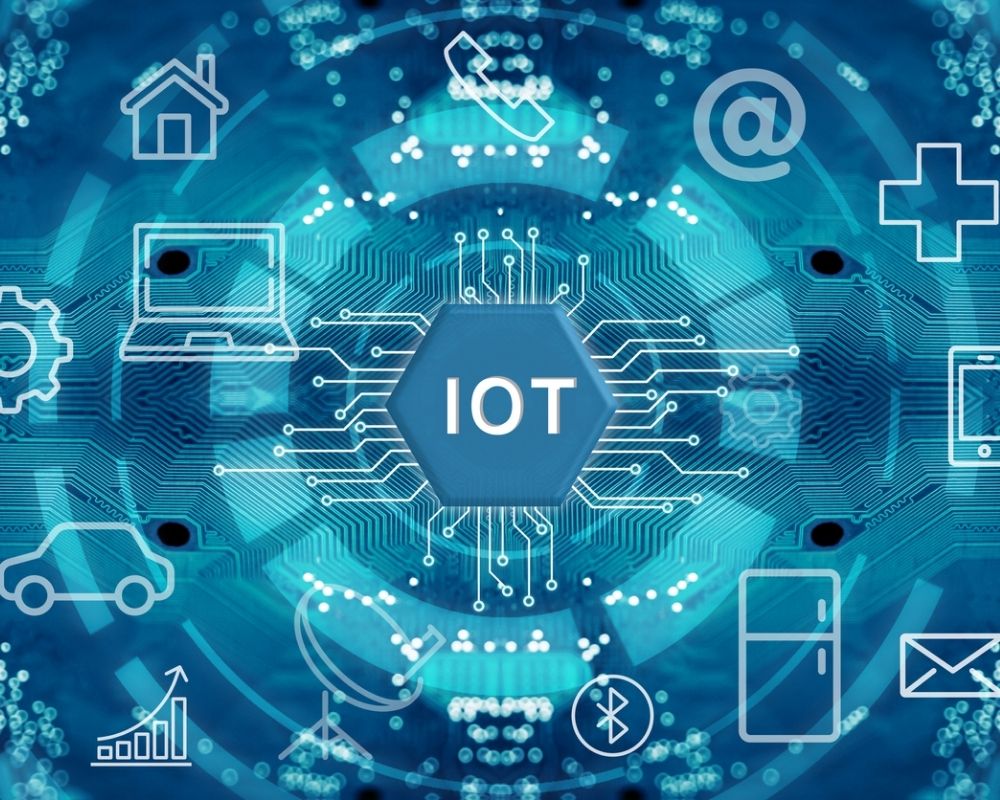
Types of IoT Devices Today. Source: Thingsup
Applications of IoT in Business and Life
The rapid development of IoT not only changes how businesses operate but also significantly improves people’s quality of life. Below are typical real-world applications of IoT devices:
In Business
Operational optimization: IoT devices enable continuous monitoring of machine conditions, optimizing performance, reducing downtime, and maintenance costs.
Predictive maintenance: Sensor data is analyzed to forecast failures, allowing proactive maintenance rather than reactive repairs.
Supply chain management: Real-time tracking of goods’ location and storage conditions (temperature, humidity, etc.).
Security and surveillance: Cameras, motion sensors, and data analytics systems enhance business premises’ safety.
In Personal Life and Urban Areas
Smart homes: IoT allows users to remotely control household devices – from lighting, air conditioning to security systems.
Personal health monitoring: Health wearables track heart rate, sleep quality, and support lifestyle improvement.
Smart traffic systems: Traffic sensors help control signals, reduce congestion, and improve urban mobility.
Environment and energy: Monitor air quality, electricity/water usage, and automatically alert when limits are exceeded.
Clearly, IoT is becoming the backbone of the digital economy, contributing to building a smarter, more efficient, and eco-friendly society.
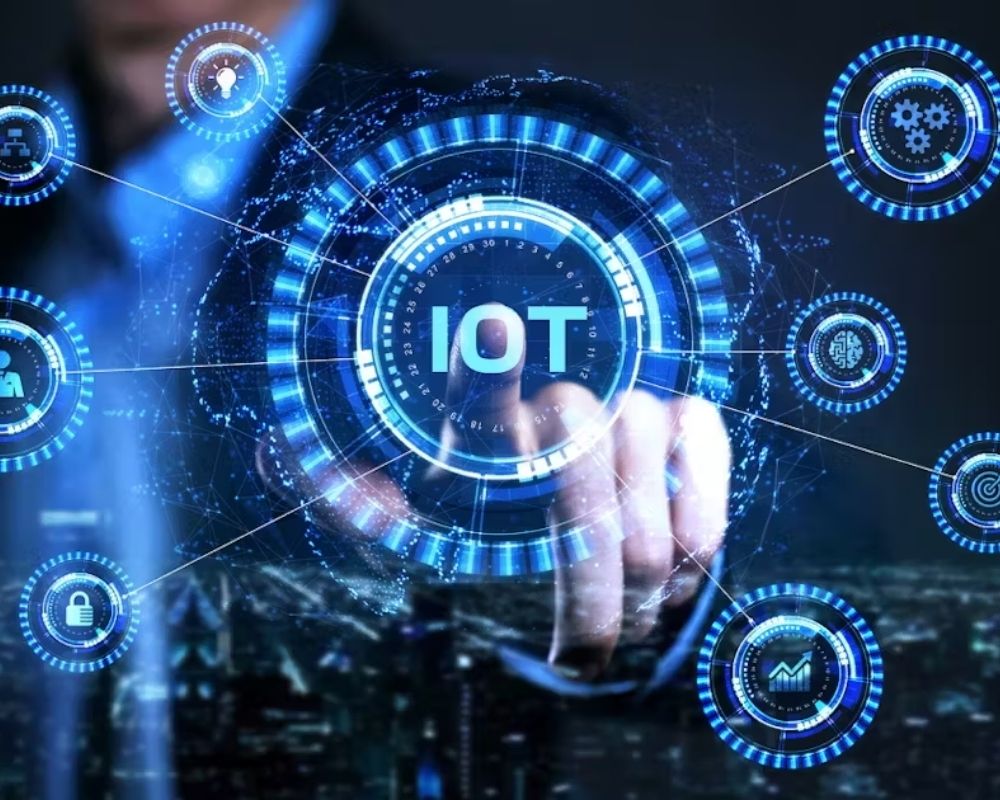
IoT applications in daily life. Source: SIW
IoT Device Trends in 2025
Entering 2025, IoT devices are not only growing in quantity but also evolving in quality, core technology, and enterprise integration methods. Below are key trends to watch:
Integration of IoT and Artificial Intelligence (AIoT)
Integrating artificial intelligence (AI) into IoT devices – known as AIoT – is an inevitable trend. AI helps analyze IoT data in real time, detect anomalies, learn user behavior, and automatically adjust devices.
Example: Security cameras not only record video but also recognize unfamiliar faces, detect intrusions, and adapt lighting or temperature based on user habits.
Fast and Stable Connectivity with 5G
5G technology enables IoT to grow strongly thanks to ultra-low latency and high-speed data transmission. This is crucial for real-time response devices such as autonomous vehicles, remote surgeries, and automated manufacturing.
Security as Top Priority
As the number of IoT devices increases, so does the risk of cyberattacks. Hence, the trend of embedding security at the hardware level (Security by Design) is becoming standard. Businesses also focus more on data encryption, access control, and network security monitoring.
Ultra-small and Energy-efficient Devices (Nano IoT)
Tiny IoT devices used in healthcare, environmental research, wearable sensors… are increasingly popular. This goes hand-in-hand with the demand for long-life batteries, renewable energy, or self-powered (energy harvesting) devices.
Expanding Cross-platform Interoperability
IoT devices are increasingly capable of seamless integration with various platforms – from ERP, CRM systems to AI, Big Data, and cloud infrastructure. This helps businesses synchronize operations, avoid data silos, and boost management efficiency.
Overall, IoT trends in 2025 will focus on intelligence, security, miniaturization, and deep integration with enterprise management platforms – opening new opportunities for comprehensive digital transformation.
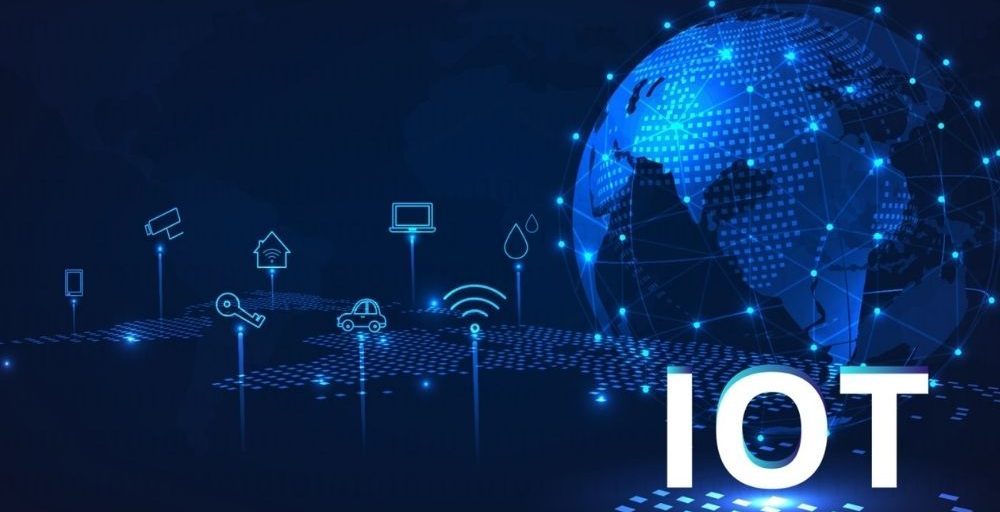
Upcoming IoT trends. Source: Omdia
BAP Software – Comprehensive IoT Solutions for Businesses
As IoT deployment becomes more common across manufacturing, logistics, agriculture, and services, businesses need a tech partner that not only understands the technology but also comprehends operational challenges. BAP Software is a pioneering provider of customizable IoT solutions in Vietnam.
IoT System Deployment and Integration Capabilities
Enterprise situation analysis: BAP helps businesses identify critical investment points in their production or operational systems for IoT implementation.
Custom IoT device design and development: Support from hardware (sensors, gateways) to control software.
Integration with ERP/SCADA/BI systems: Ensure IoT data is analyzed, visualized, and used for smart decision-making.
Cloud infrastructure and IoT dashboard deployment: Enable real-time monitoring, automatic alerts, and remote control.
Key Projects at BAP Software
Factory monitoring system: Tracks vibration, temperature, humidity, and machinery speed to detect early failures.
IoT in supply chain: Manages containers, trucks, and cold-chain cargo with temperature sensors.
Smart farm management platform: Soil, humidity, light sensors combined with AI to automate irrigation adjustments.
Advantages of Partnering with BAP
Deep customization by industry: No off-the-shelf solutions.
International-standard data security: Compliant with ISO/IEC 27001.
High scalability: Ready for AI, Big Data, Cloud, Blockchain integration as the business grows.
With the technology vision of “flexible – secure – efficient,” BAP Software is the ideal partner for any business looking to start or expand its digital transformation journey through intelligent IoT solutions.
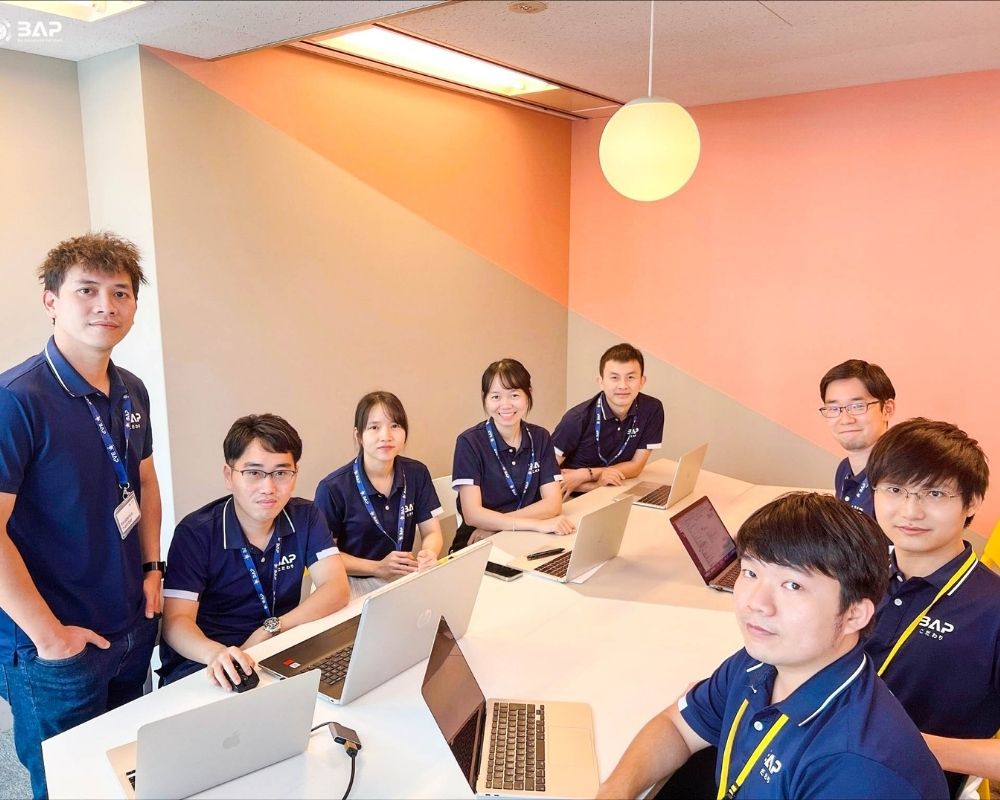
Professional and experienced team at BAP Software. Source: BAP Software
Conclusion & Recommendations
The development of IoT devices is not only a technological leap but also a great opportunity for individuals, organizations, and businesses to improve operational efficiency, service quality, and user experience. From homes to factories, from cities to rural areas – IoT is creating a smarter, more connected, energy-saving, and safer ecosystem.
However, to fully leverage the potential of IoT devices, a structured investment in infrastructure, security, and especially the integration of technology into business strategies is essential. Businesses should avoid blindly following trends without long-term vision. Instead, they should choose technology partners with strong consulting, deployment, and long-term collaboration capabilities – such as BAP Software.
If you’re looking to implement IoT into your production, management, or business operations – start by assessing your actual needs, selecting the right devices, and connecting with experts to build a safe – efficient – flexible IoT ecosystem. Contact BAP Software now and explore our IoT solutions!





![[For Beginners] What is Salesforce?](https://cdn.bap-software.net/2019/09/salesforce.jpg)






